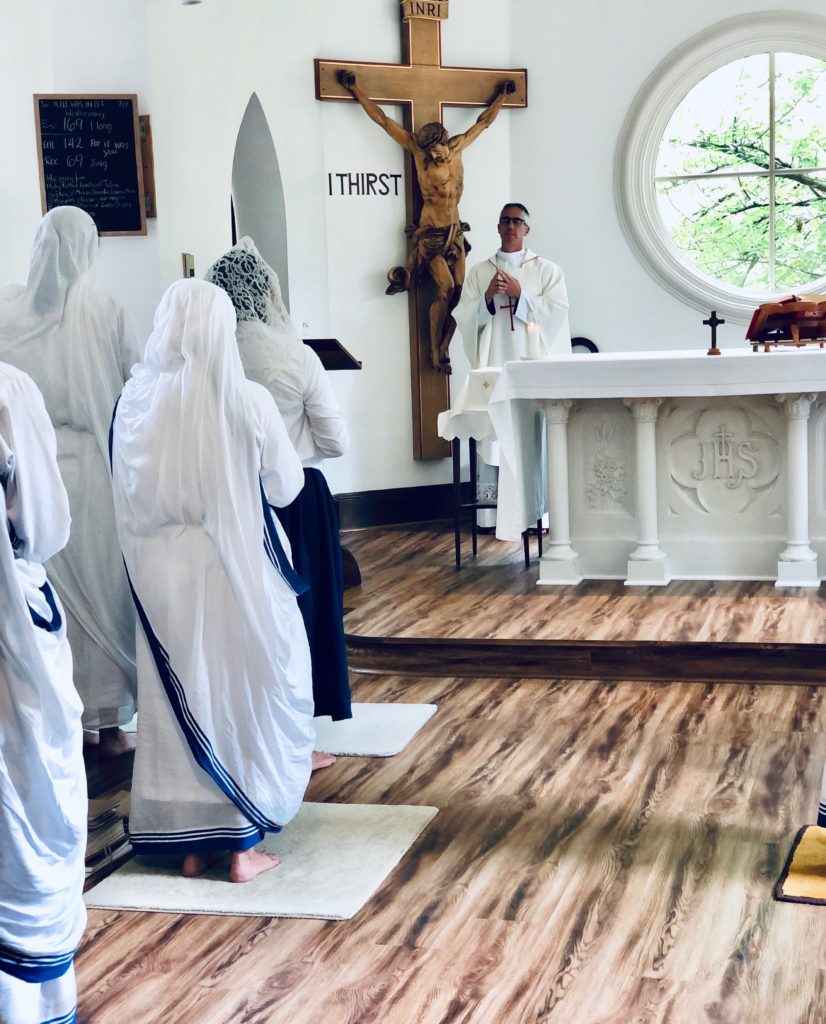by Colleen Jurkiewicz

Since the very time of Christ, retreat has been a crucial formation tool of the interior life of the Christian.
“Retreat is simply a movement more deeply into God, which is what every single heart is searching for,” said Fr. John Burns, vocation promoter for the Archdiocese of Milwaukee, who has given several retreats each year since he was ordained in 2010.
Whether you haven’t been on retreat since your Confirmation or whether you make a regular habit of it, here are some things you may not know about one of the most ancient and integral spiritual practices in Christianity.
Clerics are bound by canon law to go on retreat regularly.
When your priest makes a spiritual retreat, it’s not an excuse for a vacation — it’s an important part of his job. Canon 276.2 n. 4 compels clerics “to make time for spiritual retreats according to the prescripts of particular law” to assist them in the pursuit of the holiness demanded by their vocation. In the Archdiocese of Milwaukee, a priest is allowed one week each year for retreat, above and beyond his normal vacation time.
The Lord desires retreat for all of us — not just for clerics.
Fr. Ken Omernick, pastor of St. Charles Parish in Hartland and St. Teresa of Calcutta in North Lake, has been directing retreats for more than 35 years. “If people are willing to just give a good retreat a chance, it’s amazing what a powerful effect it can have in their lives,” he said. “We give time to all kinds of things, and ultimately, you need to sit down and say, ‘What am I going to give my time to?’ What a retreat does is it says, ‘I’m going to give so many hours to the Lord,’ if for no other reason than to say thank you for the gift of life.”
“It’s not just for priests, sisters, monks and nuns,” said Fr. Burns.
Retreats come in all shapes and sizes — but the crucial elements are the same.
There are mainly two different types of retreats. A preached retreat will feature conferences and preaching from a retreat director every day, while a guided retreat focuses more on spiritual direction and includes one-on-one meetings with a priest or retreat director. The lengths of retreats can vary from the classic 30-day Ignatian model to the more common eight-day format to a short weekend.
Many experts regard the 30-day model as the perfect retreat, but since it isn’t always a feasible option, a weekend can be a good place to start.
No matter the length or focus, Fr. Luke Strand, Vocation Director for the Archdiocese of Milwaukee, counts these as the most crucial elements of a successful retreat: “Silence, Scripture, exposition of the Blessed Sacrament, Confession, prayerful Mass and good food.”
The Holy Spirit directs the retreat.
That was the first thing he learned about planning a preached retreat, said Fr. Burns. As a newly ordained priest studying in Rome, he was invited by the Missionaries of Charity to create a retreat for their sisters in Nairobi.
“I said, ‘I was ordained eight months ago — you don’t want to send me to Africa to give a retreat,’” he said. “And she straight-up scolded me. She said, ‘Father, you will not give retreat. You will pray, and the Holy Spirit will give retreat.’”
Since that time, he has learned that any retreat must always be born from time spent before the Blessed Sacrament.
“As the director of a retreat, it’s not about me, my ideas, my plans. All those things come into it, but it really is about the fact that the Holy Spirit understands exactly who will be on that retreat and exactly what is going on in each of their hearts,” said Fr. Burns. “So the most important thing in retreat preparation is to sit before the Lord and offer him full freedom to speak whatever he would like into the heart of the director.”
“It is so important for a director to get out of the way and allow the Lord to work,” agreed Fr. Strand.
Silent retreats are awesome, particularly for young people.
Of all the retreats he has been a part of, Fr. Strand counts the Duc In Altum Silent Young Adult Discernment Retreat for men to be among the most memorable.
“It is amazing to witness what God can accomplish in silence,” he said. “When one’s life is dominated by noise, distraction and stimulus, it is difficult to dispose oneself to God. Silence provides a privileged place to encounter him. In the silence, one cannot avoid God nor can a soul avoid oneself. We must sit in the pain of being loved, seen, and known by God, and this is where peace and consolation come from.”
Retreats, or at least elements of retreat, can occur in the rhythm of our daily life.
There’s no replacement for the classic retreat, whereby one physically separates himself from the noise of daily life to encounter God. But we can all incorporate moments of retreat into our normal lives. It could be as simple as a recitation of the Seven Sorrows of Mary over your morning coffee before the family rises, a stolen moment in a church over lunch hour, or an hour in adoration at the end of the day.
“When we look at the pattern of Christ in the Scriptures, very often he is ‘retreating from’ — the city, the fray, the chaos, into the desert, into the wilderness, out on the water, up on the mountain,” said Fr. Burns. “He keeps withdrawing … to be alone with the Father, to have nothing else disrupt his union and his prayer.”
